The Delicate Glass Sea Creatures of Leopold and Rudolf Blaschka
A father-and-son team created a menagerie of incredible glass models using mysterious methods.
Specimen of Blaschka Marine Life: Synapta maculata – sea cucumber. Leopold and Rudolf Blaschka, Dresden Germany, 1885. Lent by Cornell University, Department of Ecology and Evolutionary Biology. at the Corning Museum of Glass. (Photo by Dylan Thuras)
In the late 1800s a mysterious menagerie of sea creatures was let loose on the world.
They came in a remarkable variety of forms: covered in spikes, writhing masses of legs, purple gelatinous lumps, transparent bubbling orbs. They swam through boarding schools in Minnesota, floating through the Vienna Natural History Museum, and squirming through a hundred high schools across Japan. At the height of their expansion, there were over 10,000, found everywhere from New Zealand to Calcutta.
Astonishing in form and beauty, these creatures comprised 700 varieties of invertebrate marine models sculpted in glass by Bohemian father-and-son team Leopold and Rudolf Blaschka. They were remarkable for their fragile exteriors, scientific accuracy, and beauty. But gradually, these glass animals began to disappear, their habitats shifting into dusty closets and museum storage. People began to forget that these incredible glass creations had existed in the first place.
But now, the creatures have returned.
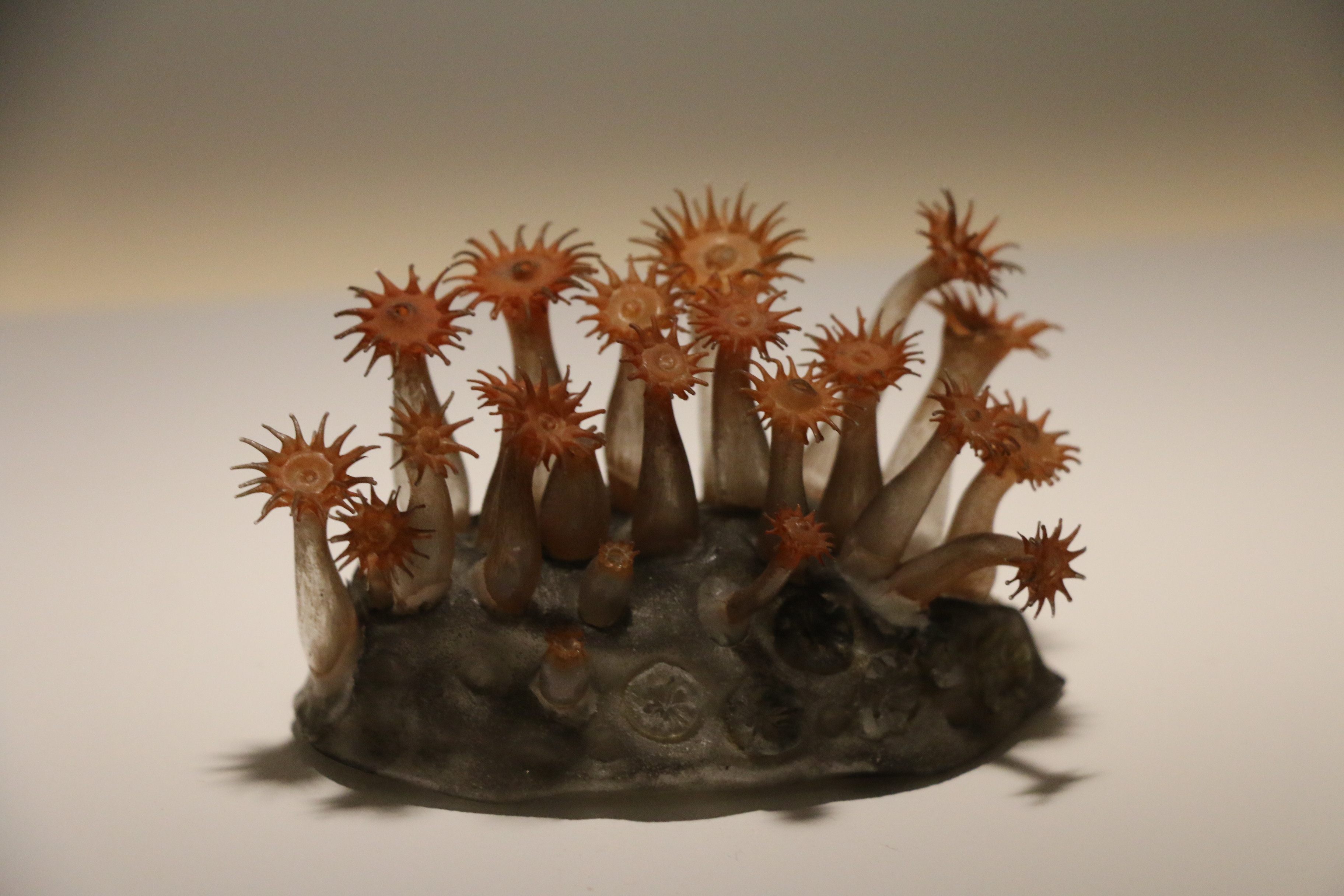 Specimen of Blaschka Marine Life:Astroides calycularis (1885), Leopold and Rudolf Blaschka, Dresden Germany, 1885. Lent by Cornell University, Department of Ecology and Evolutionary Biology. at the Corning Museum of Glass. (Photo by Dylan Thuras)
Specimen of Blaschka Marine Life:Astroides calycularis (1885), Leopold and Rudolf Blaschka, Dresden Germany, 1885. Lent by Cornell University, Department of Ecology and Evolutionary Biology. at the Corning Museum of Glass. (Photo by Dylan Thuras)One such collection of forgotten Blaschka marine models was rediscovered in a cabinet at Cornell in the 1960s. Today, the 570 Cornell models are overseen and conserved by the Corning Museum of Glass in Corning, New York. The museum is currently showing the models in its exhibition Fragile Legacy: The Marine Invertebrate Glass Models of Leopold and Rudolf Blaschka, curated by Alexandra Ruggiero and Marvin Bolt and on view May 14, 2016 through January 8, 2017.
The marine models are shown alongside preparatory drawings—nearly as beautiful as the models themselves—and the father-and-son team’s original workbench and tools. It is a deep look into the Blaschkas’ methods, which at first glance seem not just impressive to modern glass workers, but impossible.
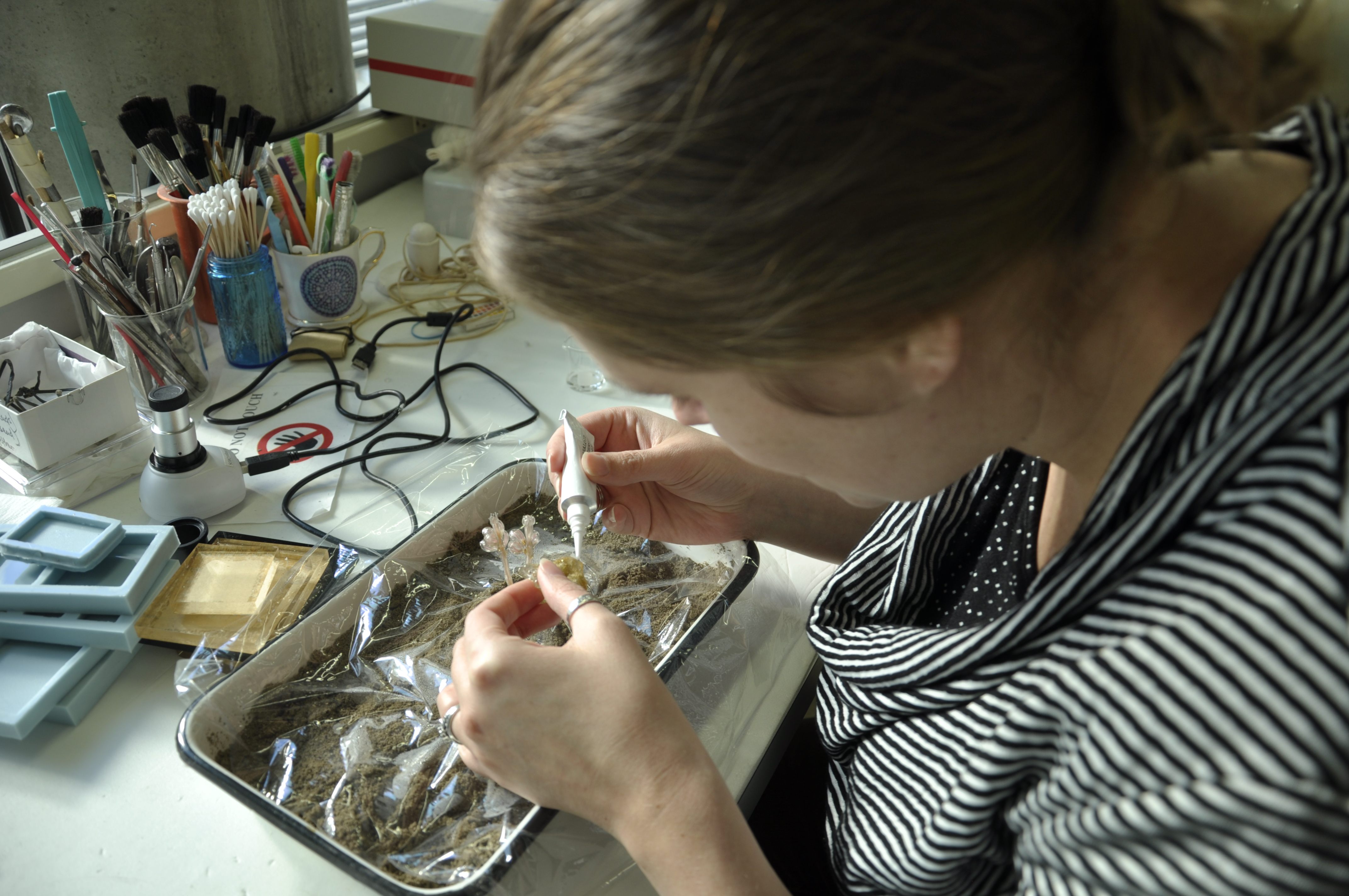 Associate conservator Astrid van Giffen working on conserving a Blaschka model. (Photo courtesy the Corning Museum of Glass.)
Associate conservator Astrid van Giffen working on conserving a Blaschka model. (Photo courtesy the Corning Museum of Glass.)
As the Corning Museum of Glass has continued to study and conserve these models, some of the mysterious techniques of the Blaschkas have begun to emerge. The world had never seen anything quite like the beautiful, scientifically accurate Blaschka models. Some were available for as little as 20 cents (adjusted for inflation, that’s still an affordable $5) in mail-order catalogs like Ward’s Natural Science Establishment. Universities and museums bought the aquatic models in bulk, and high schools around the world ordered unique glass creations as teaching tools for their classes. Even private natural history enthusiasts added them to their collections.
The Blaschkas’ sea anemone, radiolarians, and other underwater creatures emerged into a world primed for them both practically and philosophically. During the 18th century, the Enlightenment and the French Revolution had left previous social and religious institutions collapsing. In their place science and education had emerged as new shining lights. While the notion of God’s fixed unchanging kingdom was challenged by evolution, the natural world was being re-created in taxidermy and dioramas in museums around the world. Zoos, botanical gardens, aquariums, and museums were busy building their own miniature man-made universes.

Specimen of Blaschka Marine Life: Octopus Salutii (Nr. 573), Leopold and Rudolf Blaschka, Dresden Germany, 1885. Lent by Cornell University, Department of Ecology and Evolutionary Biology. (Photo courtesy the Corning Museum of Glass.)
The advent of cheap plate glass allowed for the first major public aquarium to open in 1853 in London, but museums had a problem. While they aimed to populate their collections with the world’s animals, the stranger creatures of the oceans were particularly problematic. Impossible to render in taxidermy, the ocean’s invertebrates had to be shown as wet specimens, floating in jars of alcohol. However, without bones to structure them, they collapsed into small puddles at the bottom of the jar, their colors fading away.
It was this void that the Blaschka models filled, but the story begins with a void of Leopold Blaschka’s own.
In 1850, at the age of 28, Leopold Blaschka lost his wife to cholera. His father died two years later. Heart aching, Leopold set out an a year-long journey from his native Bohemia to the United States. His aim was to lose himself in natural history, which he had always had an interest in, and let the world’s natural wonders soothe his soul. When his ship was becalmed for two weeks in the Azores islands west of Portugal, Leopold filled his days watching bioluminescent jellyfish emerge from the depths. He wrote:
“the darkness of the sea, which is as smooth as a mirror; there emerges all around in various places a flashlike bundle of light beams, as if it is surrounded by thousands of sparks, that form true bundles of fire and of other bright lighting spots”
Born into a family of craftsmen and a maker of glass eyes and jewelry, Leopold imagined these translucent creatures captured in glass. Unbeknown to him at the time, much of the rest of his life, and his yet-to-be-born son’s life, would be dedicated to capturing that momentary vision with ever increasing amounts of scientific accuracy and beauty.
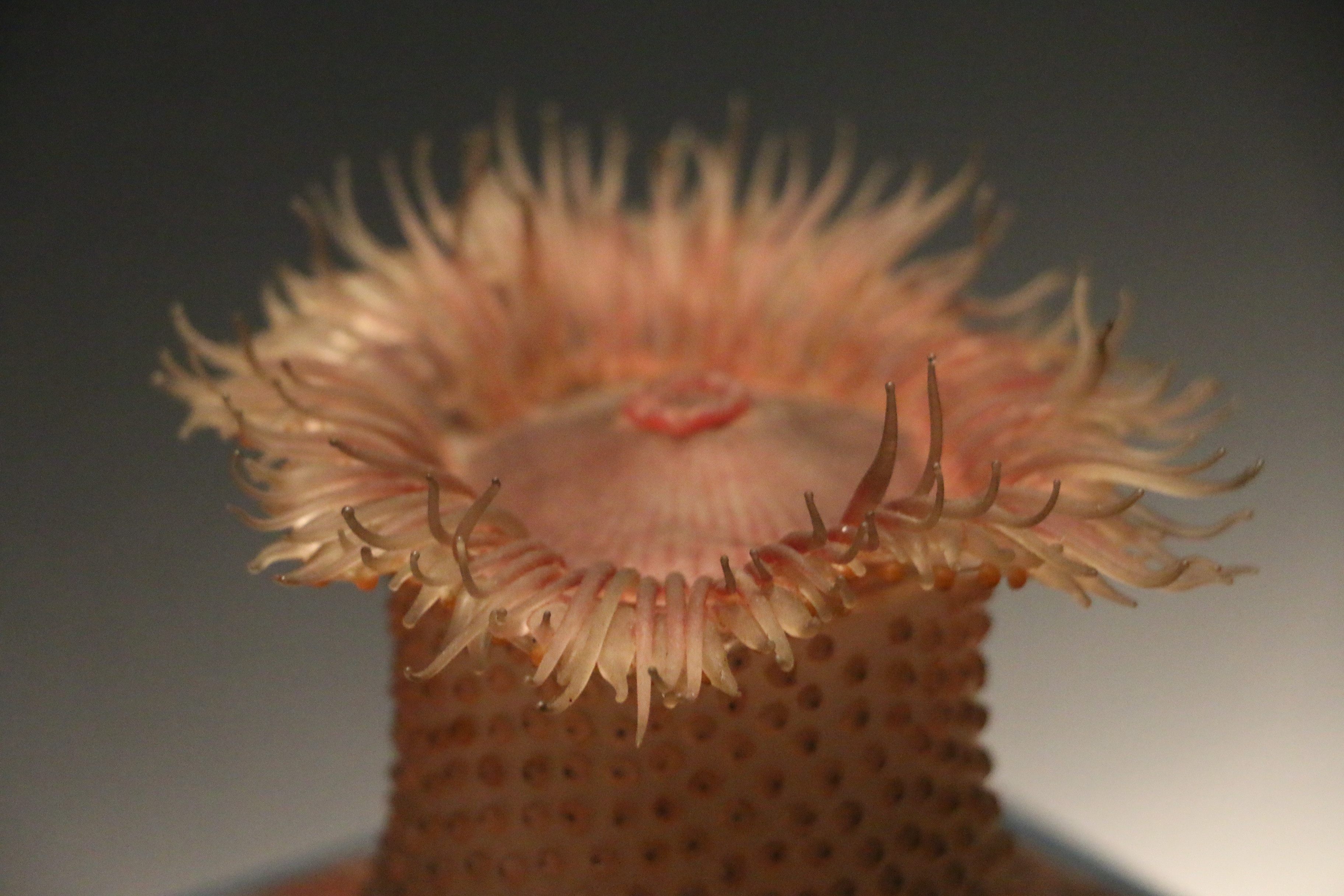
On returning from his trip, Leopold remarried. His son Rudolf was born a few years later. Rudolf grew up in the family glass-making business, learning the craft at his father’s side. At the age of 23, Rudolf began professionally assisting his father. Working together, they began creating many of the glass marine-life models celebrated today.
Since these were scientific models, the Blaschkas were focused intently on the accuracy of their creations. They used the most up-to-date scientific illustrations they could get their hands on, as well as making their own illustrations. ”The Blaschkas were much more than masters of glass-working,” says Eric Goldschmidt, Corning’s Flameworking & Properties of Glass Supervisor. “Without their skills in illustration, they would have had a very difficult time developing the necessary process to construct many of their models.”
As their construction techniques got better, so did their study methods. They acquired wet specimens from around the world, went on their own collection trips, and even built a small aquarium so they could work from life. For their glass models, the father-and-son team used flame working, done over a wooden table using a foot-pumped bellows. The small bodies of jellyfish and squid were created from blown glass.
One of the reasons that the glass models appeared nearly impossible to glass workers when first observed is that they aren’t exclusively glass. ”They were clearly very skilled in processes that go well beyond most glassworkers,” says Goldschmidt, “as they were masters of painting and enameling as well as their ability to work with paper and other materials in their models.”
To increase efficiency, the Blaschkas pre-produced many of the smaller pieces and kept them in cardboard cases. Boxes of tiny tentacles and little jellyfish heads filled their work space. For over 30 years, they likely averaged a marine model per day. They are believed to have produced over 10,000 such models in total.
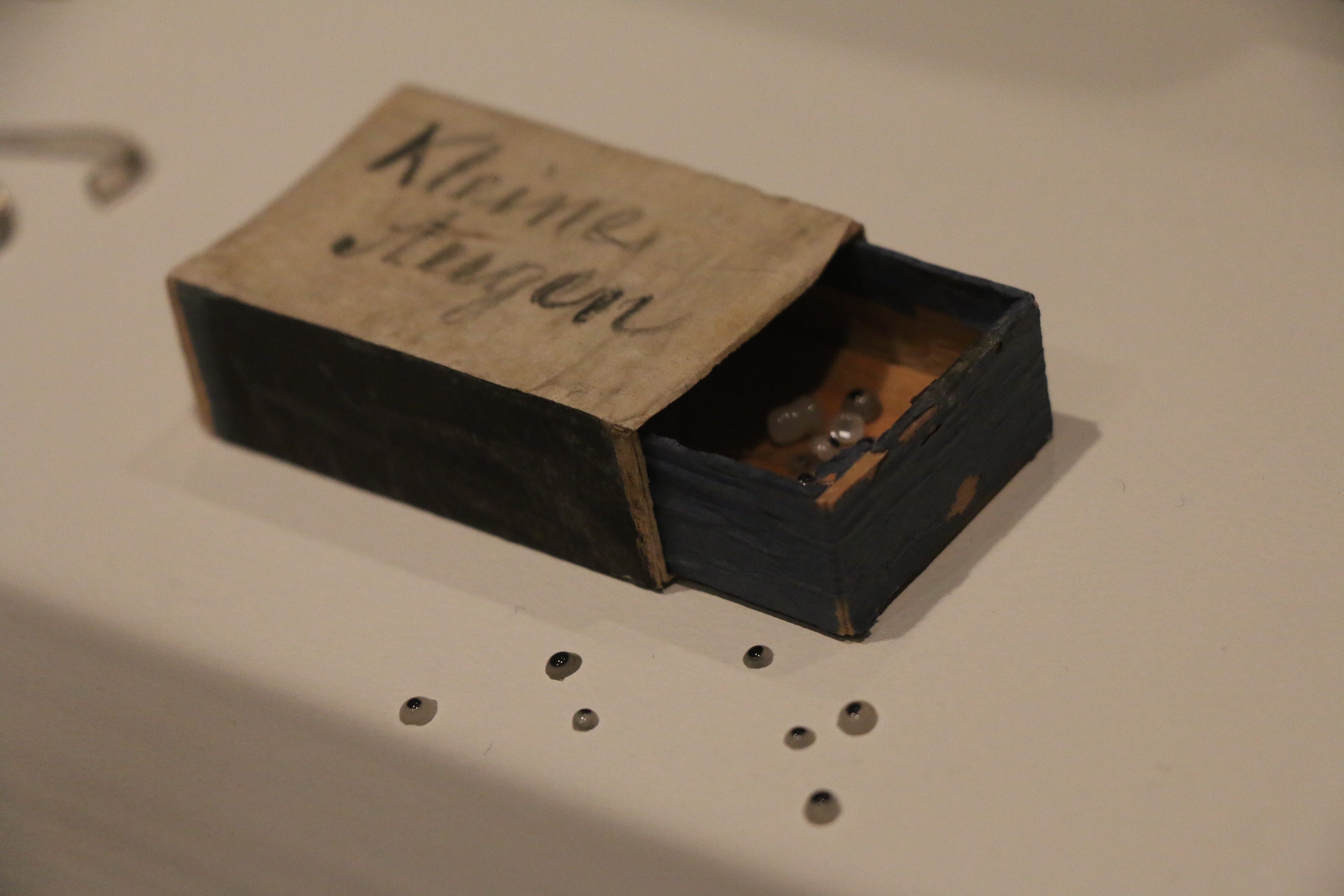
Box of Kleine Augen or “Small Eyes” in the Fragile Legacy exhibit at the Corning Museum of Glass. (Photo by Dylan Thuras)
As the delicate models aged, they were often moved into storage, or lost altogether. For years many of the Blaschka models remained hidden in closets, their fragile bodies in disrepair. It is only recently that their delicate beauty has begun to resurface. In 2002, the new director of the Museum of Comparative Zoology at Harvard University found a collection of Blaschka marine models languishing in a storage room in their mollusk department.
Leading the charge in returning the Blaschkas to prominence is the Corning Museum of Glass which, as part of their conservation efforts for the Fragile Legacy show, has begun solving some of the mysteries of the Blaschka’s unique construction methods. One technique associate conservator Astrid van Giffen has used is looking at the models under UV light to better understand the different materials the models were constructed from. As they investigate each piece, new methods and materials reveal themselves.
Even as the makeup of models becomes clearer, the mystique of the Blaschkas and their marine creations continues to grow. One search the Corning Museum has undertaken is to create a map cataloging where all the models have ended up. While a number of the major collections are well known, and being conserved, the fate of many of the Blaschkas’ creations remains mysterious. Somewhere out there, specimens of a beautiful and rare species are lurking in the deep.

The models under UV light. The tiny life-sized version of Podocoryne carnea under long wave UV light shows the orange fluorescence of shellac, which was used to glue it onto its paper card base. (Photo courtesy Corning Museum of Glass)
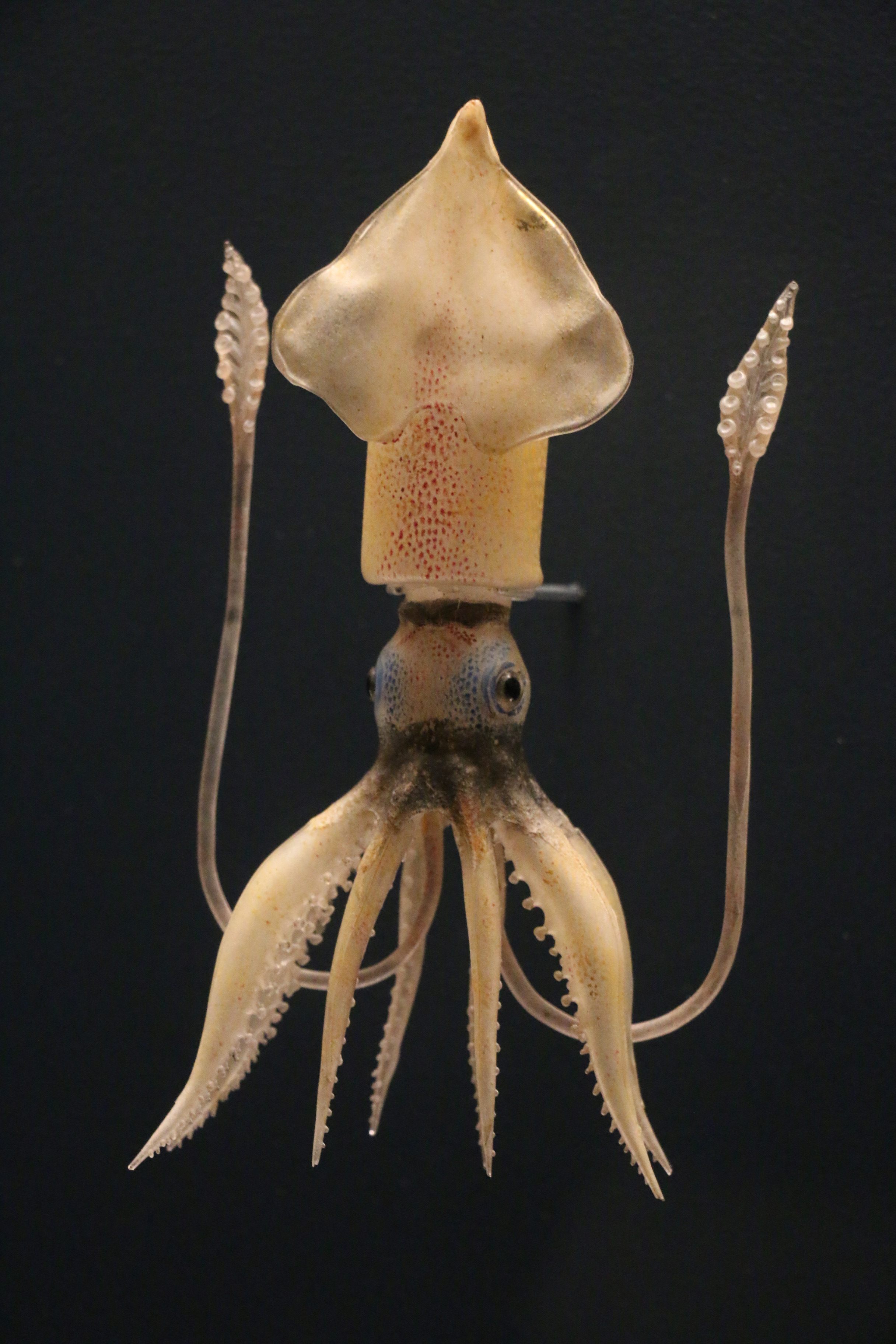
Specimen of Blaschka Marine Life: Ommastrephes sagittatus (Nr. 578), Leopold and Rudolf Blaschka, Dresden Germany, 1885. Lent by Cornell University, Department of Ecology and Evolutionary Biology at the Corning Museum of Glass. (Photo by Dylan Thuras)

Specimen of Blaschka Marine Life: Perigonimus vestitus (Nr. 172), Leopold and Rudolf Blaschka, Dresden Germany, 1885. Lent by Cornell University, Department of Ecology and Evolutionary Biology. (Photo courtesy the Corning Museum of Glass)
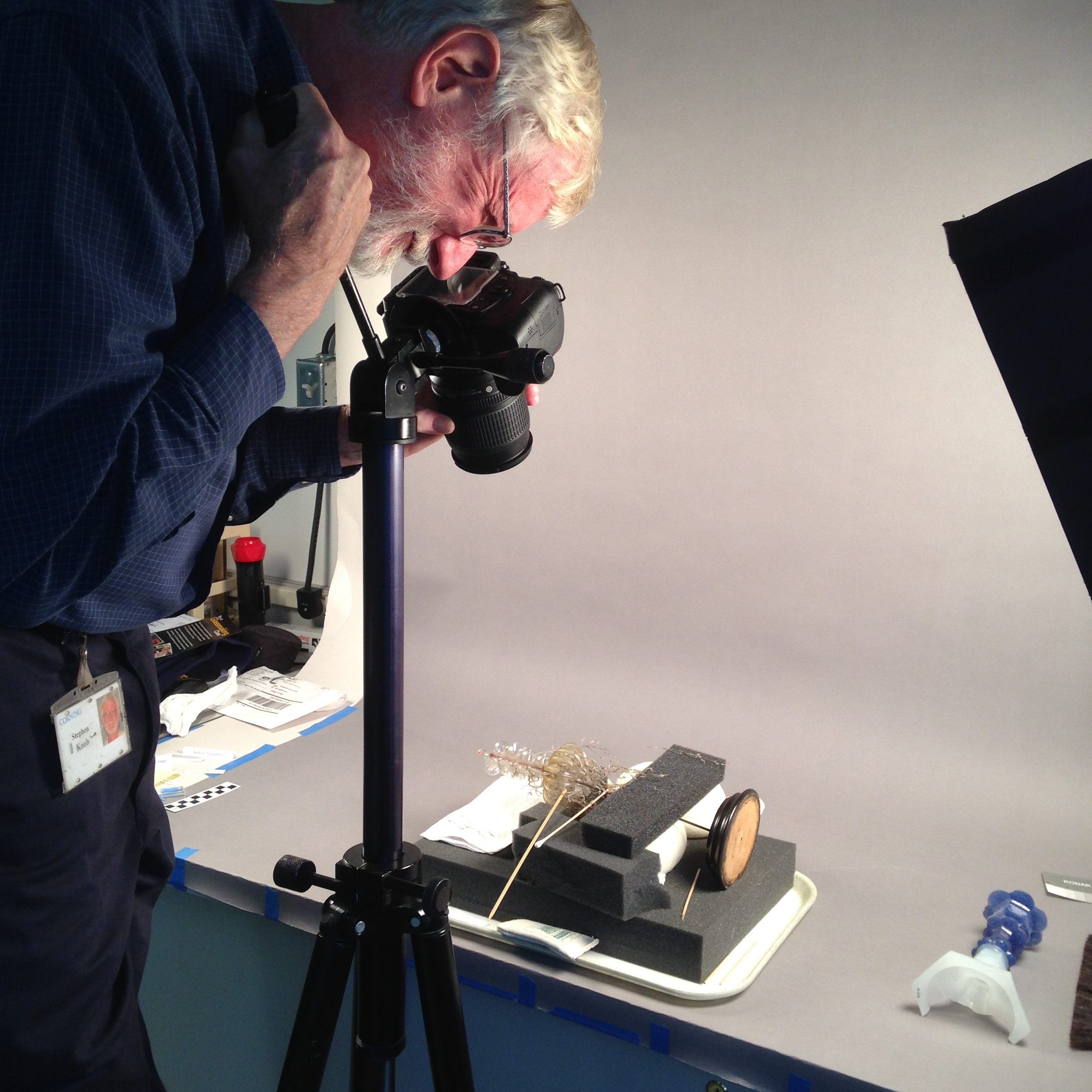
Chief Conservator Stephen Koob photographs a Blaschka model. (Photo courtesy the Corning Museum of Glass.)

Thalassianthus aster (Blashka Nr. 115), before and after Corning Museum conservation efforts. (Photo courtesy the Corning Museum of Glass.)

A good example of the mixed media. The interior of the arm is made of painted paper rather than glass. Specimen of Blaschka Marine Life, Argonauta argo (Nr. 549), Leopold and Rudolf Blaschka, Dresden Germany, 1885. Lent by Cornell University, Department of Ecology and Evolutionary Biology and at the Corning Museum of Glass. (Photo by Dylan Thuras)

Specimen of Blaschka Marine Life: Tubularia indivisa (Nr. 191a), Leopold and Rudolf Blaschka, Dresden Germany, 1885. Lent by Cornell University, Department of Ecology and Evolutionary Biology and at the Corning Museum of Glass. (Photo by Dylan Thuras)
This article is sponsored by the Corning Museum of Glass. See some amazingly detailed glass models at Fragile Legacy: The Marine Invertebrate Glass Models of Leopold and Rudolf Blaschka, on display through January 8, 2017.







Follow us on Twitter to get the latest on the world's hidden wonders.
Like us on Facebook to get the latest on the world's hidden wonders.
Follow us on Twitter Like us on Facebook